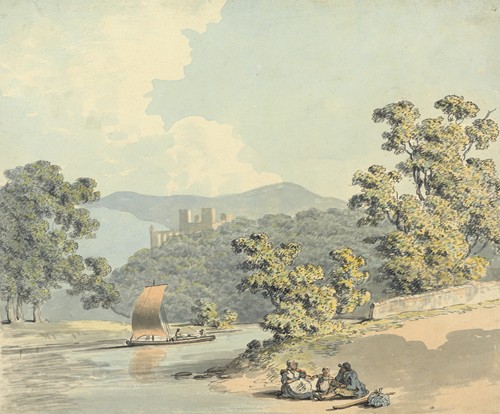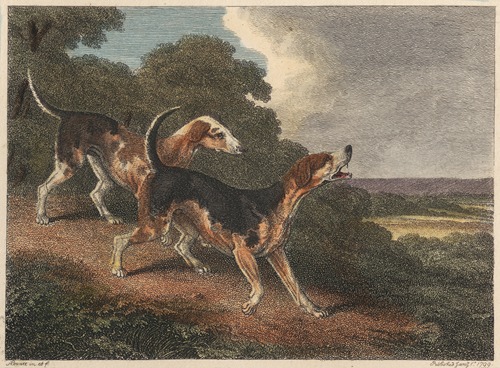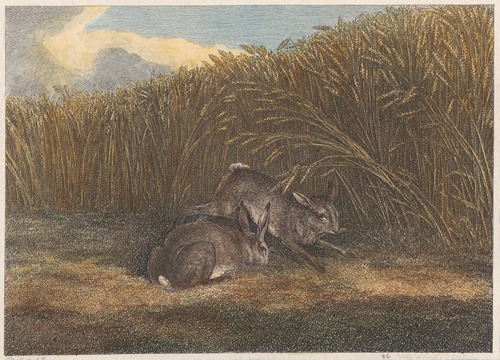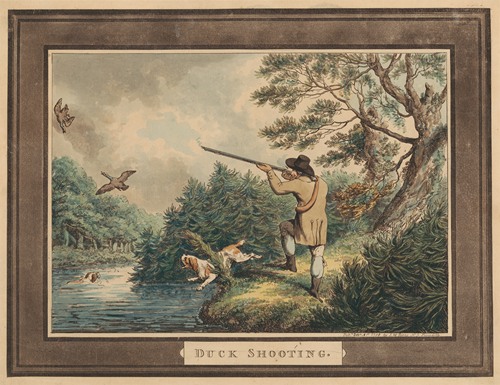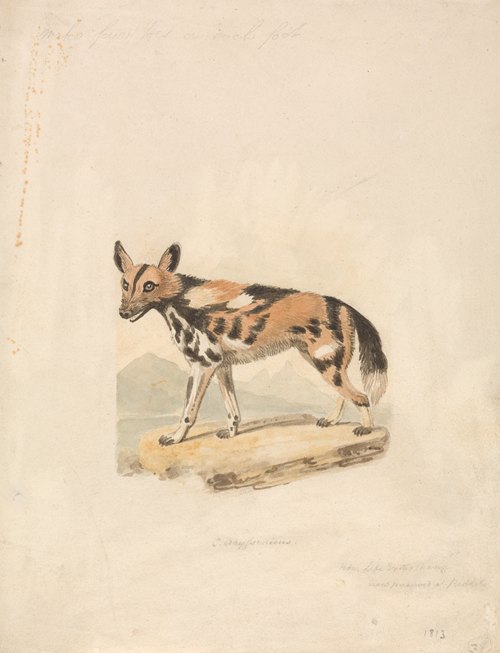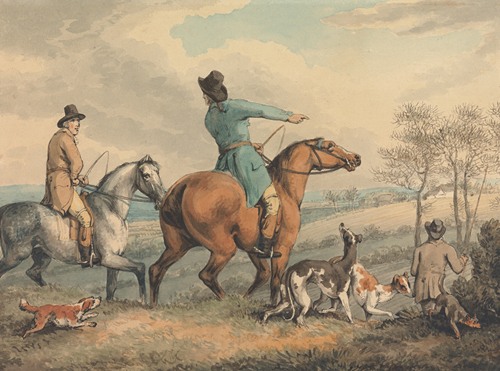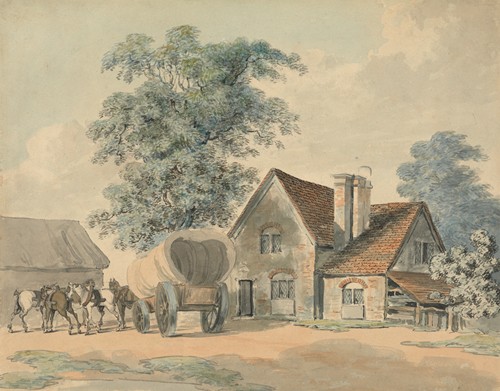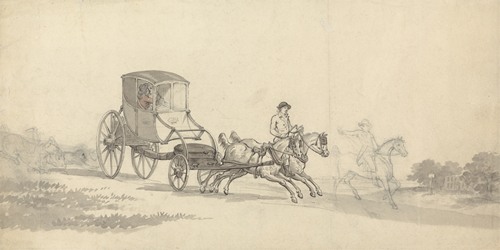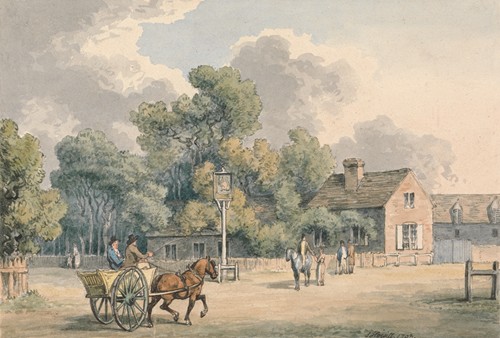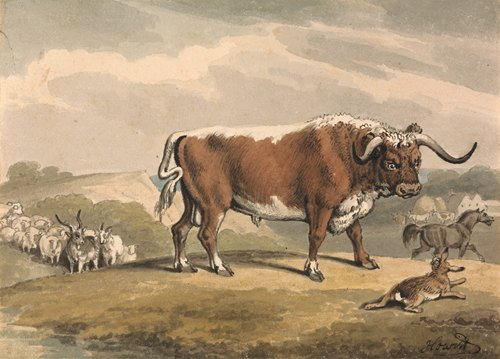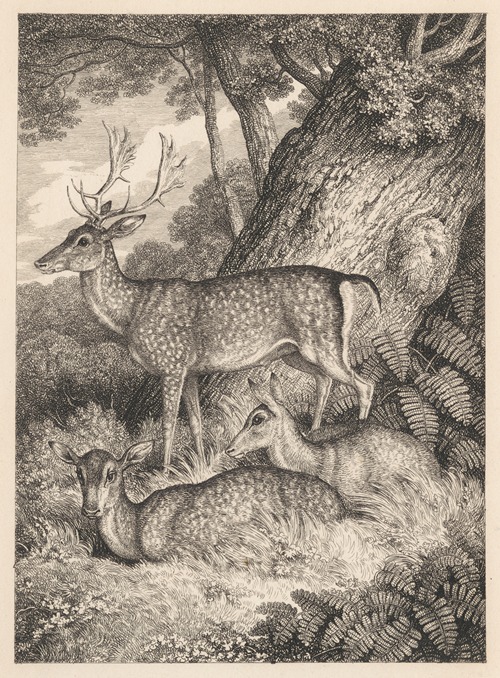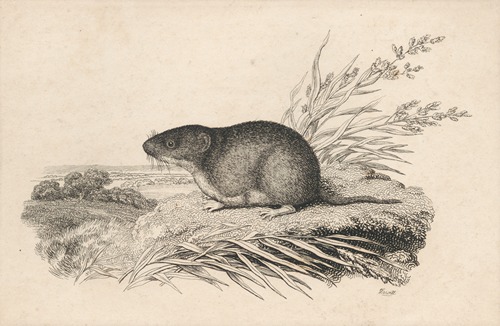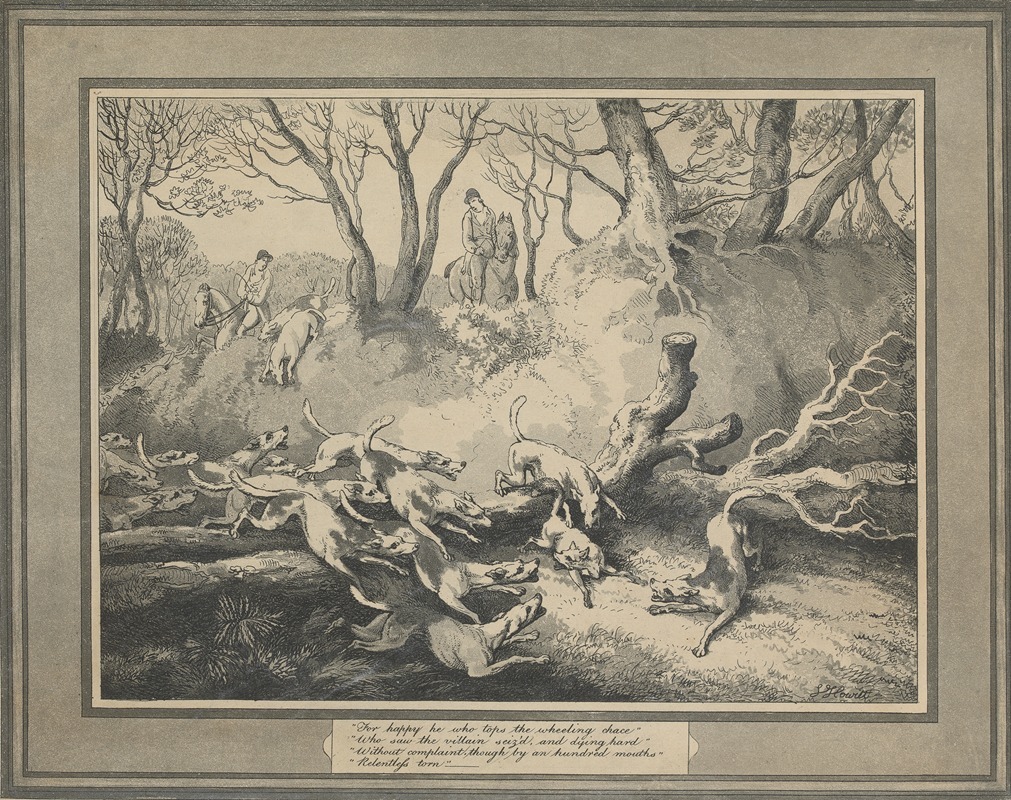
Samuel Howitt was an English painter, illustrator and etcher of animals, hunting, horse-racing and landscape scenes. He worked in both oils and watercolors.
Howitt was a member of an old Nottinghamshire Quaker family. In early life he lived at Chigwell, near Epping Forest, Essex, was financially independent and devoted himself to field sports. However he ran into financial difficulties and was obliged to turn to art as a profession - which up until then he had engaged in as a talented amateur.
Coming to London, he was for a time a drawing master at Samuel Goodenough's school in Ealing. In 1783, he exhibited 3 coloured drawings of hunting subjects with the Incorporated Society of Artists. From time to time he continued to exhibit there and at the Royal Academy, beginning in 1784 with a hunting piece, followed in 1785 by two landscapes - "A view of the ruins of an abbey" and "Fairlop Oak". In 1793 he showed "Jaques and the Deer" and "A Fox Hunt"; in 1794, "Smugglers alarmed"; in 1800, two pictures titled "Deer"; in 1814 "Dead game"; and in 1815, "Bella, horrida Bella". He probably exhibited so little because he was in such demand as a commercial illustrator.
Howitt worked both in oils and water-colours, for the most part confining himself to sporting subjects and illustrations of natural history, which were carefully executed, spirited and truthful. These, as Howitt represented in his New Work of Animals, were “drawn from the life" and published so as to "assist the pencil of the designer who has not had an opportunity to pay the same attention to this branch of the art”. However, notes in one sketchbook containing watercolours of apes and monkeys indicate that, while some there certainly were viewed in private menageries, others were studies of stuffed specimens from William Bullock’s museum and the British Museum.
Howitt was closely associated in his art with Thomas Rowlandson, whose sister he married, and his works did, at one time, often pass for those of his brother-in-law; but, unlike Rowlandson, he was a practical sportsman, and his scenes were more accurately composed. He was a clever and industrious etcher, and published a great number of plates similar in character to his drawings, and delicately executed with a fine needle. He also produced a number of caricatures in the manner of Rowlandson.
Howitt was particularly noted for the illustrations in (Captain) Thomas Williamson's Oriental Field Sports (1807), based on sketches made by the author in India . He also illustrated several other works: Thoughts on Hunting (London: D. Bremner, 1798), Other publications included Miscellaneous Etchings of Animals (50 plates, 1803); British Field Sports (20 coloured plates, 1807); The Angler's Manual (12 plates, 1808); A New Work of Animals (100 plates, 1811); Groups of Animals (24 plates, 1811); The British Sportsman (70 plates, 1812); Foreign Field Sports (110 plates, 1819).
In 1822 Howitt died in Somers Town, London, and was buried in St. Pancras cemetery.
